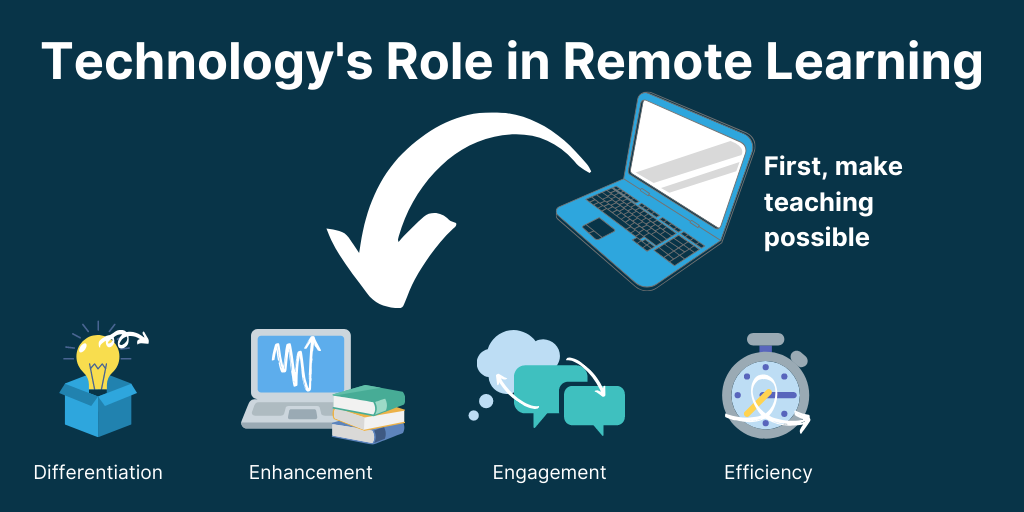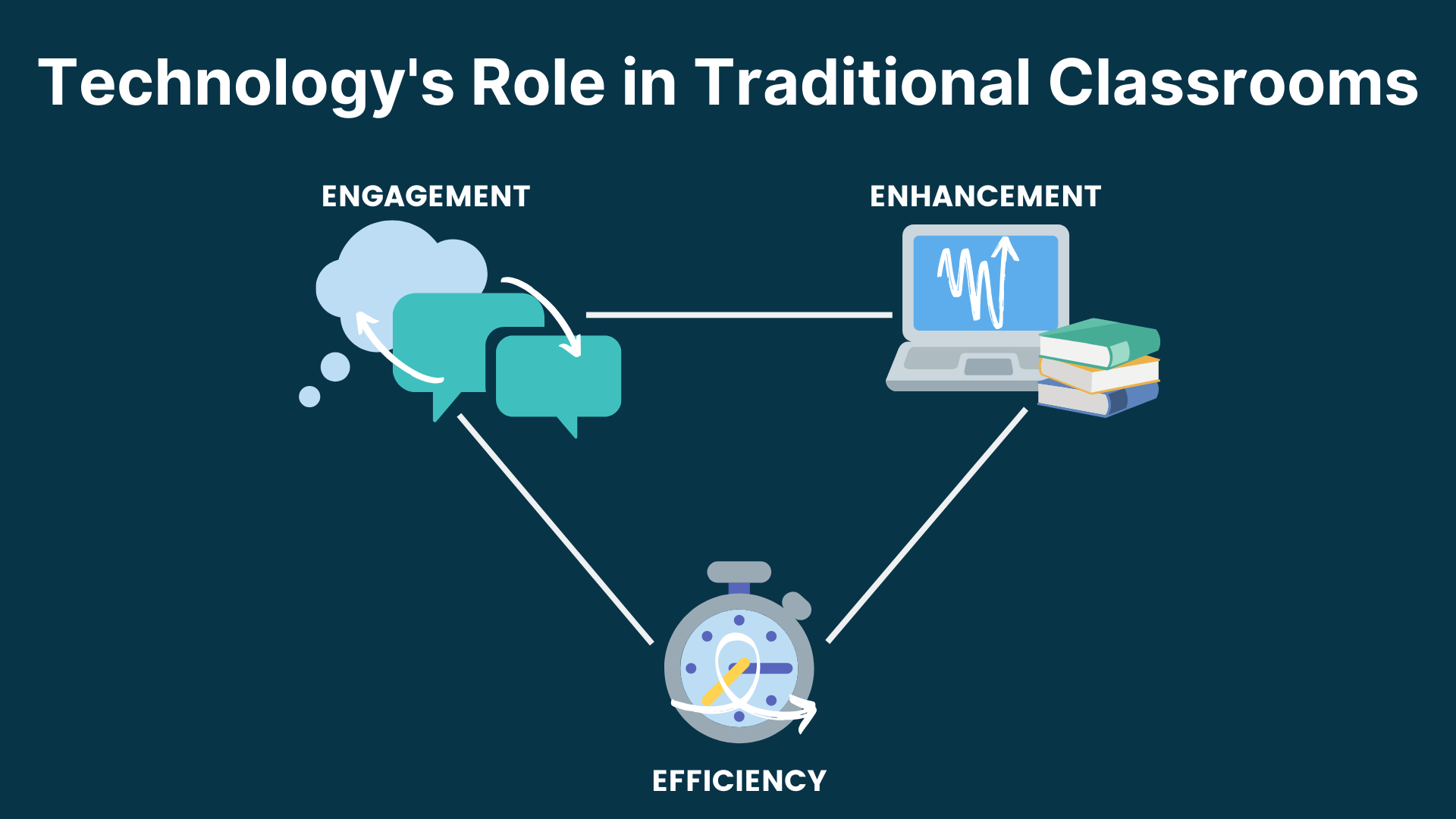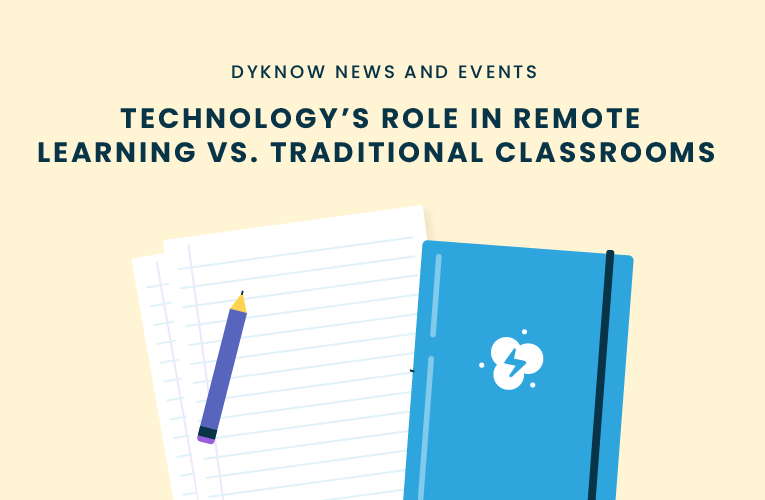Technology integration has been at the forefront of most K-12 school and district priorities in recent years but with the unexpected transition to remote learning, technology’s role in K-12 education has completely shifted.
Integrating technology in traditional classrooms typically serves the purpose of enhancing and transforming lessons and curriculum, serving a supporting role in traditional instruction. With this new teaching environment, however, technology’s role in remote learning is very different. Rather than supporting, enhancing, and transforming instruction, technology is now indispensable to the remote classroom. Technology now makes instruction possible.
It’s undeniable – more teachers are using technology for instruction now more than ever because they cannot facilitate remote learning without it. This now begs the question if technology’s role in remote learning will have an effect on technology’s role in the traditional classroom, and what the difference between the use cases really is.
Technology’s role in remote learning
New remote learning environments are proving critical to facilitate learning, technology’s role in remote learning has become an integral part of making this possible.
Inevitably, more teachers are using technology to facilitate instruction, but the purpose for which they are using it and the way they are using it is different than the traditional classroom. In a recent conversation with Sean Coffron, Instructional Technology Training Specialist at Manassas City Public Schools, he explained what this shift looks like.
In his words, “Technology is no longer a fancy bell and whistle to bring students in, but rather a resource to differentiate instruction and make instruction more effective – it is the bread and butter of how we do business.”
As Sean explains, technology is a wonderful resource for differentiation, enhancement, and transformation to make instruction more effective. Although technology’s role in remote learning has shifted to more of facilitation of learning, technology tools still enable teachers to differentiate and enhance these remote lessons. Technology tools like Google Classroom, Zoom, Flipgrid, and Screencastify are a few of the technology tools that our network of Tech Coaches recommend to teachers for remote instruction and differentiation.
Sean also shared in our conversation that teachers are a bit apprehensive about technology’s role in remote learning during this time. Regardless of what level of technology integration teachers were at prior to remote learning, all teachers are now tasked with learning how to use tools that they would otherwise not be using in the traditional classroom.

What does this mean for technology’s role in traditional classrooms?
The role of technology in the traditional classroom typically serves at least one of three purposes: to enhance instruction, increase efficiency in the classroom, and engage students further with class content.
While traditional classrooms don’t necessarily need technology to facilitate instruction, technology has become a crucial aspect of a lot of K-12 classrooms. Technology tools that increase engagement, enhancement, and efficiency are important in the classroom, as instructional time is limited. One way that the role of technology in remote learning might translate to traditional classrooms in the future is by enabling teachers to create more engaging and efficient material for students to learn at home outside of school hours.
Additionally, teachers should now be more comfortable with using technology in general, enabling Tech Coaches to provide teachers with technology tools that not only enable but enhance.
Sean Coffron also shared that his goal as a Tech Coach is to “promote the efficacy of teachers and help them feel comfortable about discussing their interests and difficulties with technology so that he can help take them to that next step.” This period of remote learning is a great time for teachers to get more comfortable using technology. From there, they can develop those interests and identify their challenges, so that they can fully utilize technology for enhancement, engagement, and efficiency in the traditional classroom.

Listen to our full conversation with Sean Coffron
On this episode of Tackling Tech Podcast, powered by Dyknow, Brett McGrath talks with Sean Coffron, the Instructional Technology Training Specialist at Manassas City Schools. Sean shares how his district is continuing to educate students online, some of his favorite online platforms, and his hopes for the future of digital classrooms. Sean advises on what it means to be a studious digital citizen.
Start teaching confidently with Dyknow for free!
Latest blog articles

Dyknow 2021 Year In Review
In addition to web browser updates and bug fixes, Dyknow released several major product updates, new features and enhancements. Check out Dyknow’s 2021 Year in Review!

The Classroom Management Tool that’s Rated #1 in Satisfaction on G2
K-12 Administrators across the world trust G2 as the #1 platform to find, research, and choose EdTech tools that solve the most pressing problems their teachers are experiencing. In G2's Fall 2021 Reports, Dyknow was once again rated #1 in overall Satisfaction out of...

Bringing Diversity and EdTech to the English Classroom
On this episode of Tackling Tech, Tierra Leustig interviews Scott Bayer about being an anti-racist teacher, diversifying reading lists, creating inclusive learning environments, and leveraging ed-tech in non-technical ELA classrooms. Scott Bayer is a High School...

